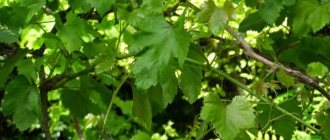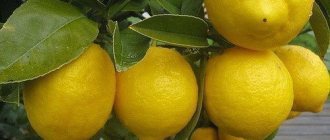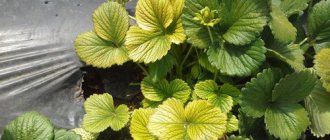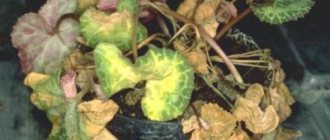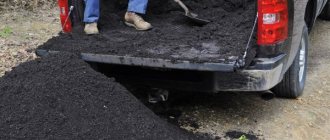Gooseberries do not bear fruit: reasons
Gooseberries are shrubby plants. It can reach a height of up to 1.5 meters. It bears fruit differently from June to August, depending on the variety. The number of fruits on a bush can also vary.
There may be several reasons why berries do not form on gooseberries or are formed in small quantities:
· The bush may be too young, or it may have been transplanted to a new location this year. The plant spends all its energy on adaptation.
· On the contrary, the bush may already be old, and therefore produces several times fewer berries.
· Since planting, no pruning has been carried out, so the bush is too dense.
· The soil lacks nutrients.
· The basic rules for planting a bush were violated.
· The roots of the plant rot due to waterlogging, or due to insect pests, or due to disease.
What year should gooseberries bear fruit after planting?
Having planted gooseberry seedlings, gardeners often expect a good harvest in the first year, but this does not happen. Even early ripening varieties require several years for active fruiting. At the same time, most types of gooseberries begin to produce maximum yields only 4 years after planting. Thus, it is necessary to carefully study the characteristics of the variety and determine in what year it will begin to bear fruit.
Once planted, gooseberries can grow in one place for 25 years. At the same time, it produces the greatest yields up to 8-10 years. In the first years after planting, a small number of fruits are formed on young branches. As the branches age, more and more berries appear on them. At the same time, the yield of bushes older than 10 years is rapidly declining. Old gooseberries do not bear fruit, although they may bloom well in the spring.
Gooseberries do not bear fruit: the wrong variety is chosen
If, when purchasing seedlings, you chose the wrong variety for your region, there will be no berries on the gooseberries.
Bushes come with or without thorns. Their presence or absence affects the rules for caring for and planting a bush.
Also, all hybrid varieties are intended only for certain areas. Therefore, if you plant such a bush, and the environmental conditions are not suitable for it, then there will be no berries on the bush.
Before purchasing a seedling, consider the temperature requirements of the variety (frost-resistant, winter-hardy, or heat-loving). The same applies to the variety’s requirements for air humidity and soil. Since varieties that cannot tolerate high humidity do not take root in such places. And varieties that love light soil will not take root in clay soil.
Poor planting material
If you received bad, weak seedlings when purchasing, they will not be able to bear fruit either in the first or second year. Bad seedlings can be identified immediately by their underdeveloped root system. There will be few adventitious roots extending from the main root. Such a bush will grow slowly, and may even stop growing, since the plant will not have enough nutrients supplied through the root system.
Landing rules violated
One of the main reasons for the lack of berries on a gooseberry bush. When planting this plant, you need to follow several important rules:
1. You need to choose a sunny place for planting, since gooseberries do not like shade, even partial. Therefore, do not plant it under fences or large trees that will block the light with their crown.
Gooseberries also do not like draft winds and stagnant water. It follows from this that there is no need to plant the bush in open, heavily blown areas and in lowlands, where water can accumulate in spring and autumn.
2. The soil for planting must be neutral or slightly acidic. In acidic soils, the plant's root system does not develop well.
3. When planting gooseberries, you need to dig a hole no deeper than 50 cm, since in deep holes the trunk of the bush does not grow well, and side shoots do not form.
4. When planting, maintain a distance between seedlings. It should be at least 1.3-1.5 m between each bush. Close planting will prevent the plant from developing. The bushes will compete for light, water and nutrients.
Main reasons
The following reasons are identified that lead to the fact that the plant does not bear fruit. It is necessary to highlight the frequently encountered ones.
Youth
Gooseberries begin to bear fruit only 4-5 years after planting. Before this, you can find rare cases when the bush bears fruit. With proper care, the bush begins to produce a harvest.
Old age
Bushes over 15 years old often begin to bear fruit poorly. In order to get a harvest, it is necessary to rejuvenate the bush. For rejuvenation, part of the woody shoots is removed.
Incorrect pruning
Gooseberries require regular pruning in the fall. Incorrect pruning or its complete absence often leads to a reduction in the size of the berries or their complete absence.
Shoots tend to actively bear fruit for 3-4 years, so after this period has expired, new shoots are left, and old ones should be removed.
Branches that have grown greatly must be thinned out and damaged ones removed.
Errors during landing
The number of berries can also be affected by improper planting. Common mistakes are:
- the area where the gooseberries are planted is poorly lit;
- the bush is planted under trees or buildings;
- the soil was not fertilized when the seedling was planted;
- The seedling was planted incorrectly.
Also, the reason for the lack of berries may be care after planting the seedling in open ground.
Impact of pests and diseases
In order to get a harvest, it is important to promptly treat the crop from diseases and pests. Pests attack buds and leaves, which negatively affects the yield. When infected with diseases, the bush does not bear fruit and often dies.
Influence of weather conditions
Often unfavorable weather conditions lead to problems and lack of harvest. The following weather conditions can affect gooseberries:
- rains - can contribute to the formation of diseases;
- dry weather - reduces the number of buds, resulting in no harvest;
- late frosts - when exposed to low temperatures, which can occur in late April - mid-May, the crop does not bear fruit.
Also, bad weather negatively affects the growth of the bush, which also negatively affects the harvest.
Irrigation regime violations
Improper watering is important for the development of gooseberries. The plant does not like moisture and can tolerate dry temperatures. However, to obtain a harvest, it is necessary to irrigate the bushes every 6-7 days.
How does age affect
After planting a crop as a seedling in open ground, it is necessary to provide it with proper care. However, gooseberries begin to bear fruit fully 5-6 years after planting. Fruiting of the bush begins earlier, but this feature depends on the crop variety. In order for the bush to bear fruit, it is very important that the shoots are branched. If the bush is middle-aged, but at the same time receives all the necessary nutritional components, the crop produces a harvest every year, regardless of weather conditions.
Gooseberries can bear fruit for up to 20 years, and the harvest will be plentiful and the berries will be large. However, the plant receives all its strength to form fruits from the soil.
Over time, the soil becomes depleted, so in the absence of proper fertilizing, the crop stops bearing fruit. In such cases, the solution is to transplant an adult bush to a new place of growth.
See also
Description and characteristics of the Finnish gooseberry variety, planting scheme and care
Read
Relationship between variety and fruiting
Some gooseberry varieties have features that must be taken into account when planting them:
- The Plum variety is distinguished by its yield regardless of weather conditions. A gardener can get a harvest from a bush that is 4 years old.
- Variety Pink - a distinctive feature of this species is the fact that the harvest can only be harvested on shoots that are 2-3 years old. The remaining shoots bear fruit poorly. Therefore, it is important to prune correctly.
- Variety Malachite - if neglected and branchy, the crop will not bear fruit.
Some varieties of gooseberries tend to produce a bountiful harvest within a year. Moreover, the number of fruits does not depend on weather conditions.
Why does weather affect
Gooseberries are early crops that bloom early. Frosts can cause inflorescences to fall off. Rain causes the buds to wither, resulting in no fruit.
Gooseberries do not bear fruit: care rules are violated
An important factor for fruiting is care after planting. Many gardeners make a mistake and as a result there are no berries on the bush.
1. Watering. Very important for normal growth. You need to water the plants every week, but make sure the soil is dry. If, for example, it rained all week, then it is clear that there is no need to water additionally. But if it has been hot all week, then you need to monitor the condition of the soil and, if necessary, increase watering.
Each bush needs approximately 5-6 liters of water. The water should be warm. If you took it from the water supply, then you need to defend it. Well, you need to water the plants, of course, in the evening.
2. Fertilizer application. For good fruiting, gooseberries need nutrition. On poor soils, of course, there are few or no berries. Gooseberries are fed approximately three to four times throughout the entire season. The first fertilizing should contain nitrogen to increase vegetative green mass. Subsequent feedings should contain potassium and phosphorus for good flowering and fruiting.
3. Mulching and loosening. As a result of loosening, the roots receive an influx of oxygen, as a result they grow better and absorb nutrients better. The soil covered with mulch retains moisture longer after watering and also helps the plant fight weeds.
What to do and how to make gooseberries bear fruit
Gooseberry Malachite - what to do with the plant after picking the berries
Let's say why the gooseberries don't bear fruit, we figured out what to do - here's a new question. The only answer to this is to follow all the rules of agricultural technology.
- You should initially carefully select seedlings, and zoned varieties that are adapted to local conditions. When choosing, be sure to inquire about the timing of flowering and fruiting in order to adapt the care program.
- Even if the wrong place was chosen for the bush from the very beginning, it should be replanted. Sometimes replanting and subsequent fertilizing allow you to get a solid harvest within a year. Only such work should be performed with protective gloves, because the spikes can seriously injure your hands.
- This is an unpretentious plant, but it still needs to be watered in a timely manner, loosen the soil around it, mulch the soil, achieving increased resistance to diseases and pests.
- In the year when the main variety is planted, you should plant several more varieties of gooseberries suitable for flowering periods nearby for cross-pollination.
- If during the period when gooseberries bloom there is a high risk of return frosts, you can combat low temperatures by using smoke.
- During drought, gooseberries are provided with protection from the wind.
- Even the most resistant varieties are recommended to be treated with insecticides and fungicides for preventive purposes. It is best to do this in early spring, before the ovary appears, so that the berries do not contain chemicals later. In the fall, the soil around the bush needs to be dug up and plant debris removed, since next year they are almost guaranteed to become sources of infection.
Important! If you cannot save the bush, it is better to completely uproot it and destroy it so that the infection does not spread to other plants.
But in principle, if you take care of the garden in a timely manner, such measures will not be necessary. Regular pruning and sanitary treatment of shrubs is a guarantee of its longevity and good productivity.
Incorrect pruning of the bush
To prevent the gooseberry bush from becoming too thick, it needs to be pruned. The bush is pruned several times a season. Basically, excess, diseased and old branches are cut off completely, at the root. The seedlings themselves are also pruned to 4 buds. If this is not done, then over time the bush will grow old and will not bear fruit. Pruning rejuvenates the bushes and promotes good health.
berry harvest. Crown-forming pruning is also important. Which also saves from thickening of the bush.
But excessive pruning will also damage the bush. You don’t need to get too carried away, otherwise the plant will need time and all its strength to recover.
Further care for gooseberries
Planting is not all that is necessary to obtain a harvest. So, further care of gooseberries should also be correct, which you will learn about later.
Tillage
For the stable development of gooseberries, as well as for the crop to bear fruit, it is worth systematically digging or loosening the soil. As for the depth and force of cultivation, it depends solely on the structure of the soil. Thus, dense soil requires digging with a shovel, but loose soil can be sufficiently “fluffed” using a garden fork.
The roots of the bush are close to the soil surface, so processing that is carried out near the crown should be carried out as carefully as possible. At the time of loosening, it is permissible to touch only the top layer of soil, without going deeper than 7 centimeters. As for the perimeter around the bush, you can cultivate the land more confidently.
Equally important is the timely destruction of weeds, which provoke high humidity at the bottom of the bush, and these are suitable conditions for the occurrence of various diseases.
Feeding and watering
Gooseberries bear fruit for many years, taking a large amount of useful substances from the soil, so the annual application of various fertilizers is a necessary measure. In spring, each bush needs half a bucket of compost, 50 grams of superphosphate, 25 grams of ammonium sulfate, and potassium sulfate. If the bushes are large and produce a good harvest, the norm is doubled.
Fertilizers must be applied around the perimeter, namely in those places where the roots of the plant are located; after these places are abandoned, the soil is loosened. The first time fertilizer is applied immediately after the crop blooms, then, after 2-3 weeks, fertilizing is carried out using a solution of manure in a ratio of 1:5.
Bush pruning
Some people believe that the formation of bushes is not so important when growing gooseberries, however, this opinion is erroneous. So, first, pruning helps to form the base of the bush: perennial branches are cut in half, and root shoots are also removed
From the fourth year, pruning of bushes is carried out in order to eliminate thickening. As part of this procedure, weak and dried shoots are removed. Old shoots are pruned from bushes that have reached the age of 3 to 6 years.
Cold protection
The plant cannot be called whimsical, and even under a layer of snow, the gooseberry roots will be protected. However, experienced gardeners recommend treating the crop with preparations before the onset of cold weather that will prevent it from getting sick and will help it bear fruit well when the time comes.
After the harvest is harvested and the leaves have fallen, plant debris must be removed. Next, the gooseberries are treated with Bordeaux mixture. Next, you need to dig up the soil near the trunk so that insects cannot infect the gooseberries. Afterwards the crop needs feeding.
Methods of controlling diseases and pests
Gooseberries are sometimes attacked by moths, sawflies or aphids. To protect against such attacks, use Karbofos, ash caste or biological agents. Processing is carried out in the spring. If such a need arises, spraying is carried out again after flowering begins.
Another problem with the plant is powdery mildew, which is identified by gray spots on the leaves. To combat this disease, a solution of baking soda and iron sulfate is suitable. Such processing is carried out as soon as a problem is detected.
Plant age
Depending on the variety, the gooseberry bush may begin to bear fruit in the 2nd or third year, and in some varieties even in the fourth. This is fine. Basically, a bountiful harvest is obtained from bushes that have not yet reached 8 years of age. If the bush is already more than eight years old, the number of berries on the bushes decreases. Then you can carry out strong rejuvenating pruning, after which the bush will begin to bear fruit well again.
Gooseberries do not bear fruit: no pollination
Before purchasing gooseberry bushes, familiarize yourself with its self-pollinating properties. For some varieties this indicator is very high, for example, Plum, Russian, Chernomor, and for some it is very low, for example, Record.
Also, some hybrid varieties can form dry winds in very hot weather; as a result, pollen falls on dry pistils and fertilization will not occur, and therefore there will be no fruit.
Presence of diseases and pests
One of the reasons for the lack of berries is diseases of the root system. Particularly dangerous are fungal diseases that develop slowly and prevent the bush from forming a good harvest or the berries from fully ripening.
If you notice the signs of a bush becoming infected with a fungus in time, you can start fighting it in time.
Signs of a bush being affected by a fungus:
· Leaves change color and become paler.
· Dry spots appear on the leaves.
· Buds and leaves fall off.
In addition to disease, insects can also harm the bush. They can be seen upon careful inspection. As a rule, they leave the products of their vital activity on the leaves. You can also see their eggs on the back of the leaf. As soon as you see insects, you need to urgently start fighting them, otherwise they can eat the entire bush.
To prevent diseases and insects, gooseberries are treated with various fungicidal and insecticidal preparations in early spring, before the buds open, and folk remedies are also used.
Pests
Particularly harmful are the moths, which eat the berries from the inside and envelop the outside in cobwebs. Because of this, the fruits turn red ahead of time, and then begin to rot and rot right on the branches.
Currant glassweed, gooseberry moth and gooseberry sawfly eat up the buds, leaves do not form or grow poorly, so the bush sometimes does not have enough strength to flower. At best, the harvest will be poor.
Aphids, scale insects and other sucking parasites draw juice from stems and leaves, which can also weaken the gooseberry so much that it does not produce berries.



